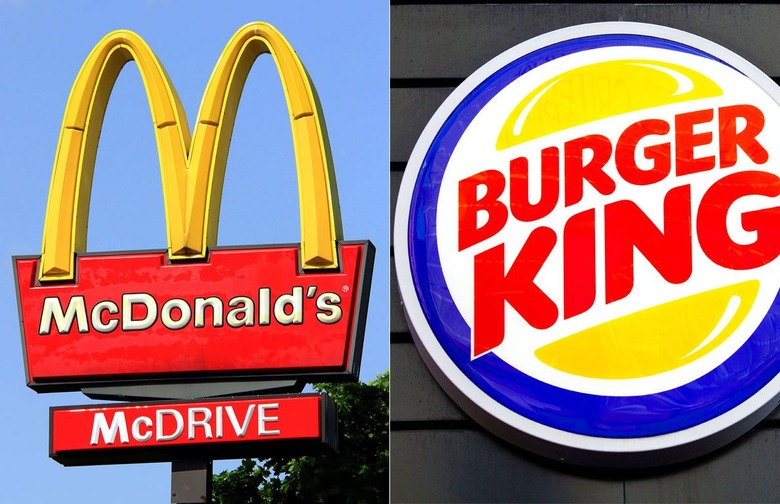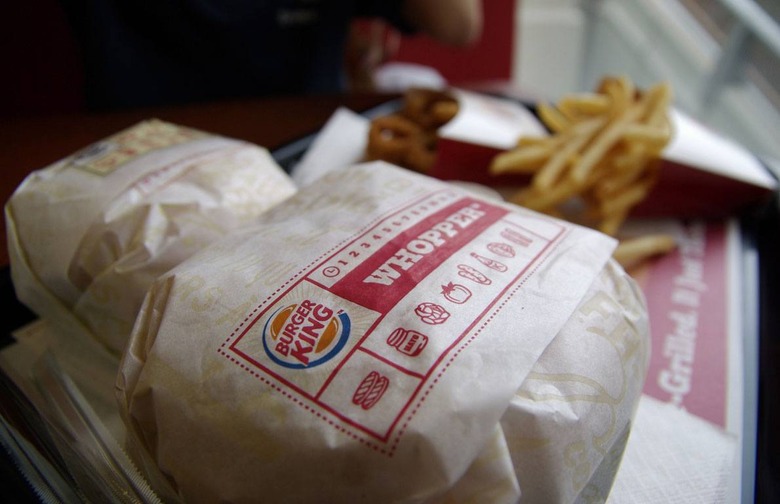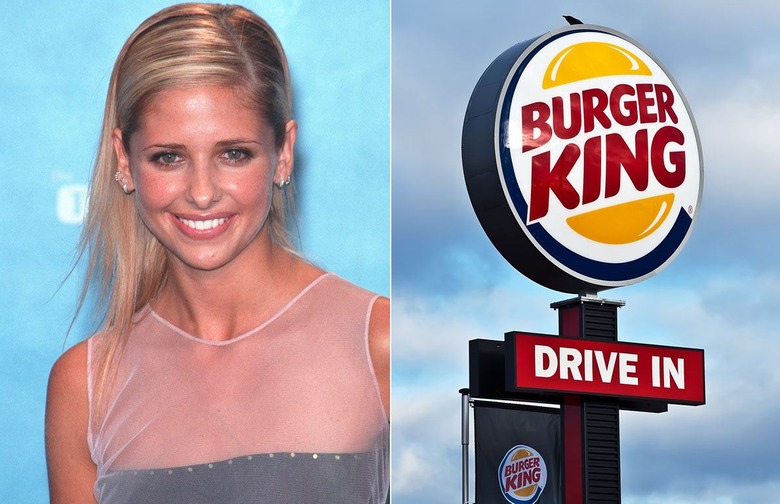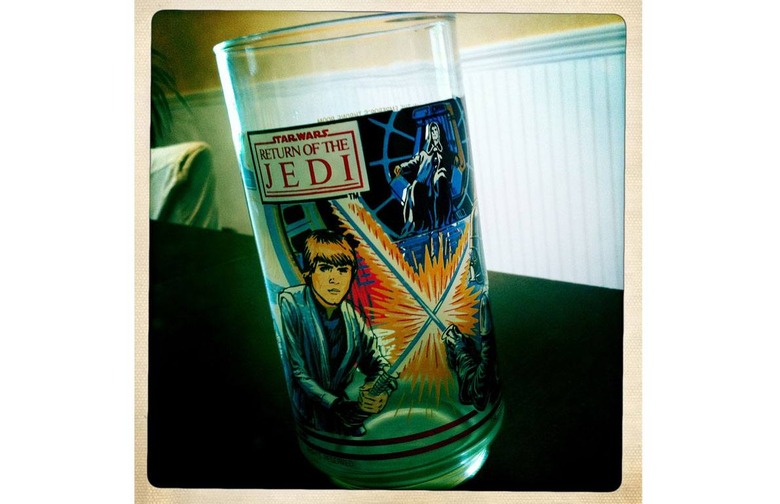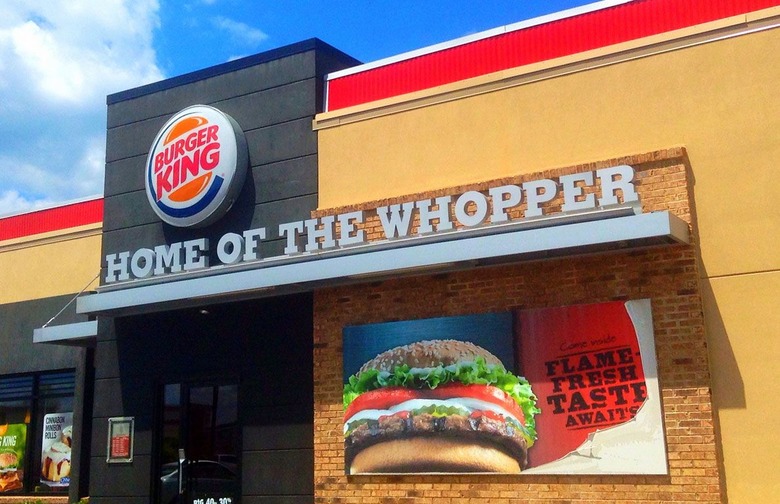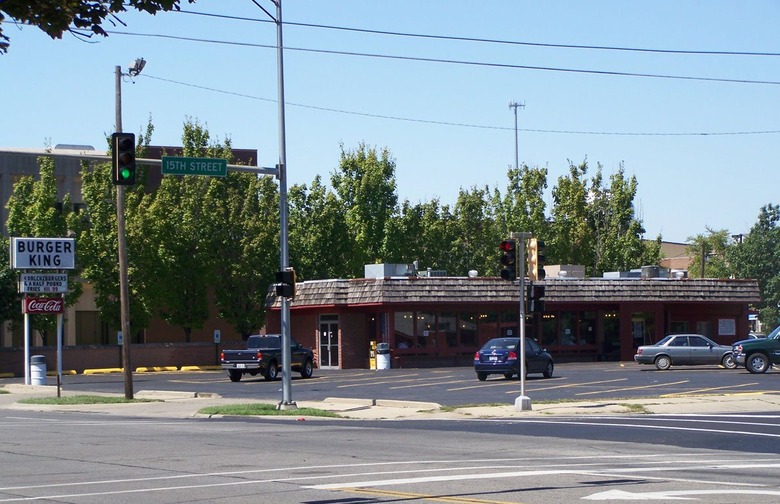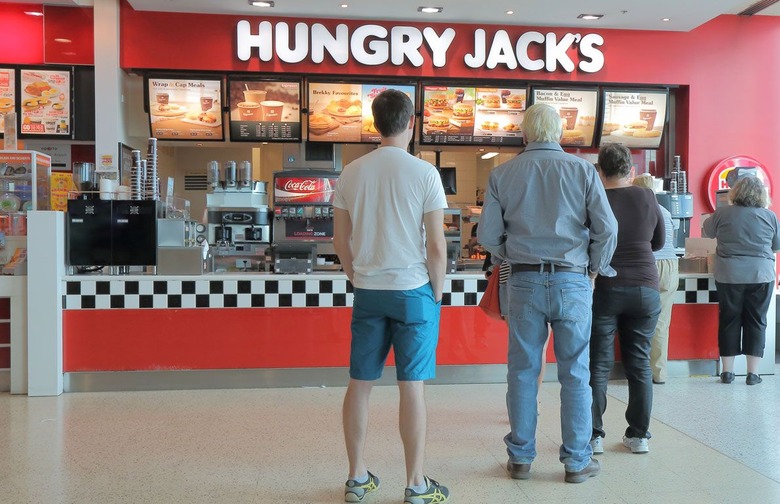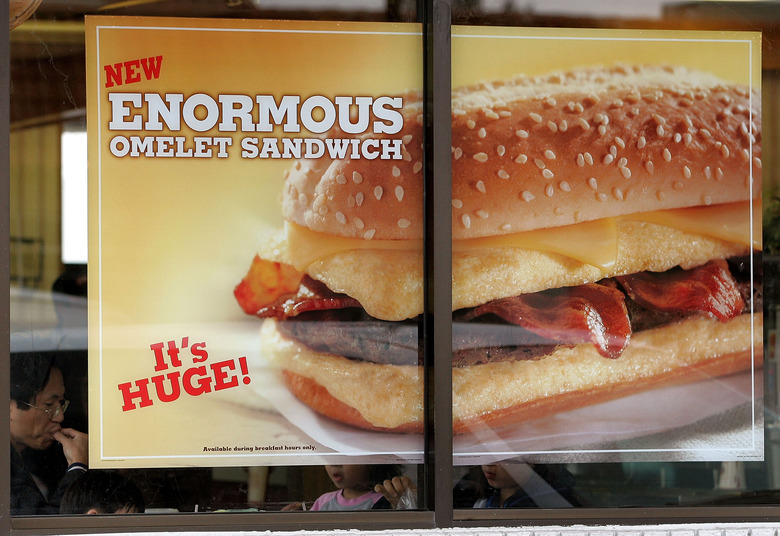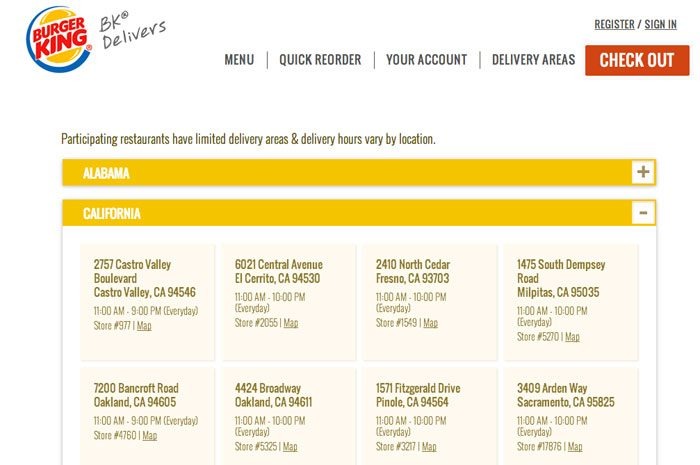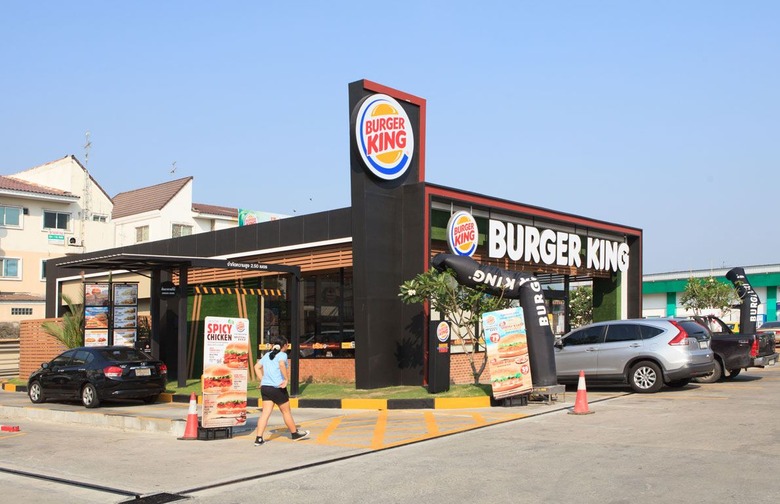10 Things You Didn't Know About Burger King
Burger King: The Home of the Whopper. This mega-burger chain has locations all across the globe and has seen a lot of ups and downs in its day. It's also never been afraid to jump into the fray (instigating the famed "Burger Wars" of the 1980s) or to get a little weird (we'll never be able to get that bizarre "King" mascot out of our heads). But even though you may be familiar with BK and its occasionally wacky ways, we bet that there's a lot you didn't know about this legendary company.
It Was Inspired by McDonald’s
Burger King's first incarnation was founded in Jacksonville, Florida, in 1953, after a man named Keith Kramer and his wife's uncle Matthew Burns visited a little burger shop in San Bernardino called McDonald's that turned out burgers, fries, and shakes in record time. They purchased the rights to a newfangled broiler that could cook 12 patties simultaneously and opened a burger shop of their own.
It Was Originally All About the “Insta”
The name of that magical broiler was called the Insta-Broiler, and the chain was originally called Insta-Burger King. The "Insta" prefix was removed after the company failed in 1959 and was purchased by its Miami franchisees, James McLamore and David R. Edgerton, who expanded to 250 locations by 1967.
It Gave Sarah Michelle Gellar Her Big Break
The famous "Burger Wars" of the 1980s were sparked by an attack ad aired by Burger King in 1981, in which a young Sarah Michelle Gellar (who later exchanged stakes for burgers as Buffy the Vampire Slayer) called McDonald's out by name and claimed that Burger King's burgers were bigger and better-tasting. McDonald's executives were so peeved that they sued Burger King.
Burger King Pioneered the Product Tie-In
The product tie-in is ubiquitous now, with just about every big-budget film lending its name to some food product to help with promotion. But no fast food company thought to team up with Hollywood before 1977, when Burger King decided to partner with a little indie film called "Star Wars" to sell glasses featuring the main characters from the movie.
The Whopper Was Stymied in San Antonio
When Burger King began an expansion into the San Antonio area, they were prevented from using the word "Whopper" in any advertising or restaurants because an of existing chain in the region called Whopper Burger. This Texas-sized stalemate raged on until Whopper Burger owner Frank Bates passed away in 1983 and his wife Barbara sold the chain to Burger King's then-parent company, Pillsbury.
There’s a Burger King in Mattoon, Ill., That Has Nothing to Do with the Chain
Burger King wasn't exactly an uncommon name for a burger joint when the chain was attempting to expand, which landed them in some serious pickles. For example, when Burger King opened 50 locations in Illinois in the 1960s, the owners of an existing restaurant in the small town of Mattoon (who had trademarked the name Burger King in the state) sued them in what turned out to be a landmark case that's still studied in law school. The case ended up going all the way to federal court, where it was decided that, because the corporation had a national trademark but the family-owned Burger King was just trademarked in the state, Burger King was allowed to open anywhere they pleased as long as it wasn't within 20 miles of the Mattoon restaurant. To this day, there's a Burger King in Mattoon that has no affiliation with the chain.
It’s Called Hungry Jack’s in Australia
When Burger King was angling to get into the Australian market, they faced a similar situation: An existing restaurant in Adelaide had already trademarked the name, and wasn't budging. So parent company Pillsbury provided franchisee Jack Cowin with a list of names that the company had already trademarked, and he chose Hungry Jack, the name of Pillsbury's pancake mix. To this day, all Australian Burger Kings are called Hungry Jack's.
A ‘Male-Oriented’ Strategy Backfired
Remember the oddball proto-viral campaign Subservient Chicken and the creepy "Wake Up with the King" commercials? Those were all part of a concerted effort in the early- to mid-2000s to appeal to the male 18-to-24 demographic. The new products released to help get young guys through the doors included the Enormous Omelet Sandwich, which contained 730 calories and 45 grams of fat (17 of them saturated) and the Meat'normous Sandwich, which was even unhealthier. The BK Stacker, which was introduced in 2006, came with up to four patties. These items received a lot of negative press due to their insane calorie counts, and when the company was purchased by 3G in 2010 this strategy was discontinued. The giant sandwiches were replaced by less "male-oriented" items, like chicken tenders and smoothies.
Burger King Delivers in 14 States
Want delivery? Burger King is testing out delivery in 14 states: You can order online and have your meal driven to your door in specially designed boxes intended to keep the food hot.
It’s Time-Consuming and Extremely Expensive to Open a Franchise
If you've thought about opening a Burger King franchise of your own (and really, who hasn't?), all you'll need is $1.5 million in net worth, $500,000 in liquid assets, a $50,000 franchise fee, and the time to complete 84 days of classroom training and seven weeks of in-restaurant training.

